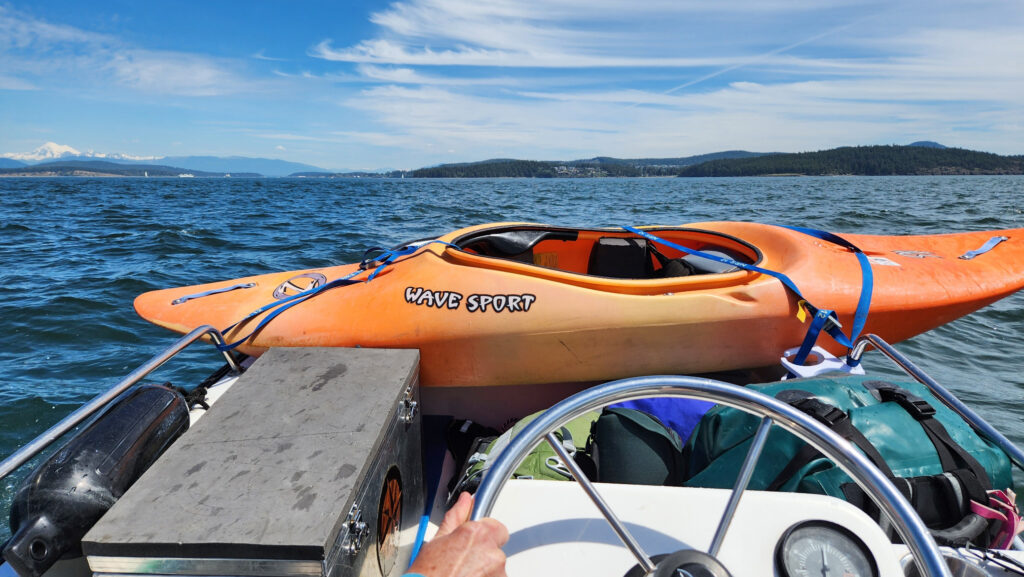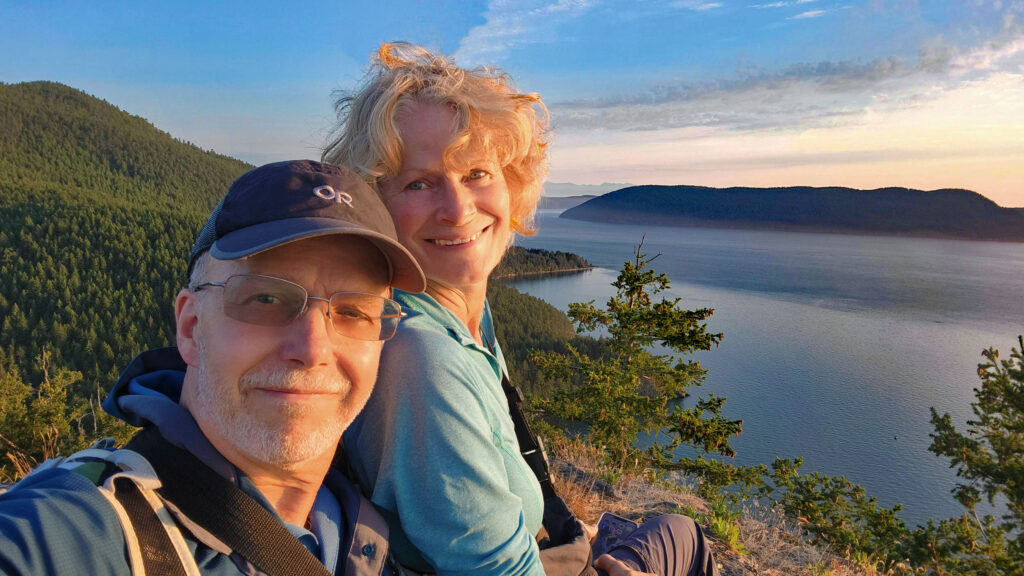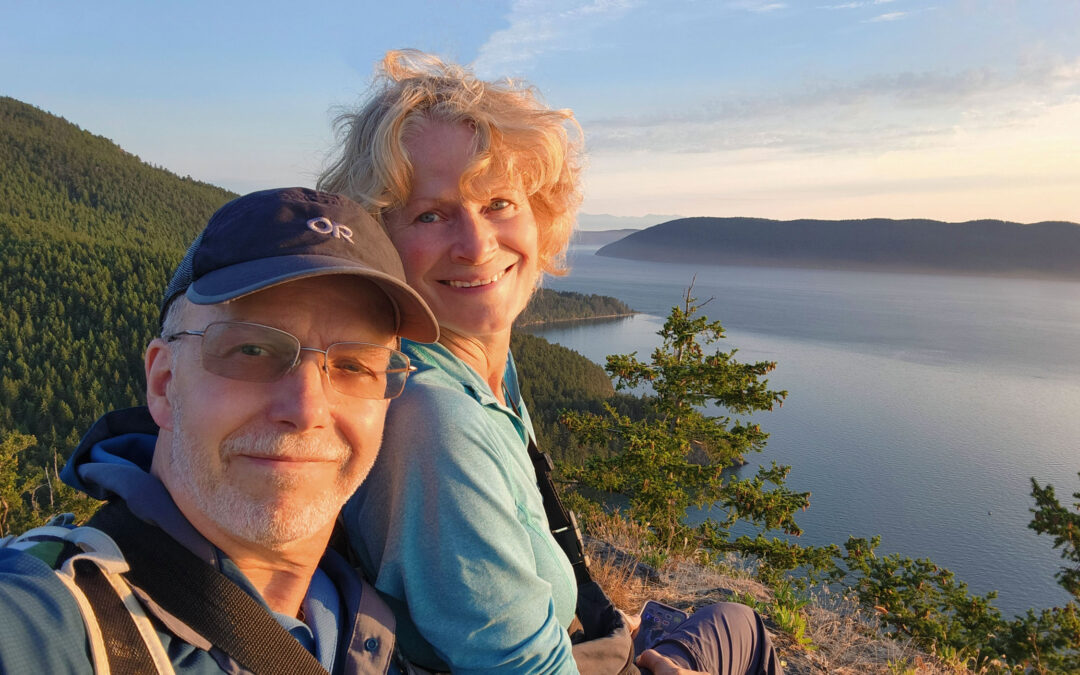Washington State’s Cypress Island is a forested mountain rising from the Salish Sea — a rugged, largely undeveloped wilderness with 20 miles of stunning shoreline. It’s a peaceful escape from the busier surroundings of Anacortes, Bellingham, and the more heavily visited San Juan Islands. Covering about 5,500 acres and home to only around 40 residents, that’s roughly .007 people per acre — the kind of place that could inspire a James Bond adventure, don’t you think?
There are no bars, shops, or restaurants here — only quiet beaches, forested trails, and the occasional yacht anchored in a secluded bay. You can almost picture 007 aboard one of them, sipping a martini (shaken, not stirred).
Getting to Cypress Island
Mary and I have made many escapes to the peace and solitude of Cypress Island, usually arriving in something far less glamorous than a luxury yacht — most recently, our little 13-foot Boston Whaler. Over the years, we’ve also arrived by kayak, cuddy cabin, and once aboard a friend’s cruiser.
The island is only accessible by boat, although water taxis from Anacortes or Bellingham make the trip easy for those without one. Kayaking to Cypress, while rewarding, can be hazardous and should only be attempted by experienced paddlers familiar with the area’s strong currents and rapidly changing weather.

Exploring the Island
Once ashore, you’ll find free campsites, quiet beaches, and 20 miles of lightly used hiking trails, including a memorable climb to Eagle Cliff, where sweeping views reveal the neighboring San Juan Islands. On one visit, Mary and I stayed until sunset, hiking down through the forest as coyotes yipped in the distance — a wild and unforgettable soundtrack.
(Note: Eagle Cliff Trail is closed for bald eagle nesting from February 1 to July 15.)
Birders will find plenty to enjoy here year-round, from bald eagles and ospreys to herons, loons, and other seabirds that frequent the island’s shores.
Camping and Wildlife
Our favorite campsite is Pelican Beach, with easy access to Eagle Cliff and distant views of Mount Baker, often glowing pink in the evening alpenglow. Cypress Head is another great camping area, offering both beachfront and wooded sites.
One evening at Cypress Head, while sitting quietly on the rocky shore, I watched four orcas glide past, their dorsal fins slicing through the calm water — one of those rare moments you never forget. My camera was still in the tent, but the image remains perfectly vivid in my memory.
Planning Your Visit
Both Pelican Beach and Cypress Head, along with moorage buoys and about 5,100 acres of the island, are managed by the Washington Department of Natural Resources (DNR). Campsites are first-come, first-served and include picnic tables, fire rings, and composting toilets. You’ll need to bring your own water and pack out your trash — a small effort for such a pristine experience.

Final Thoughts
Our adventures on Cypress Island may not have the glamour or intrigue of Bond’s escapades on Cyprus, but they’ve been every bit as memorable — peaceful beaches, empty trails, big waves on the way in, and quiet evenings by the fire as sunsets painted the clouds in brilliant color.
For anyone looking to escape crowds and reconnect with wild, coastal beauty, Cypress Island is a hidden gem of the Pacific Northwest.

